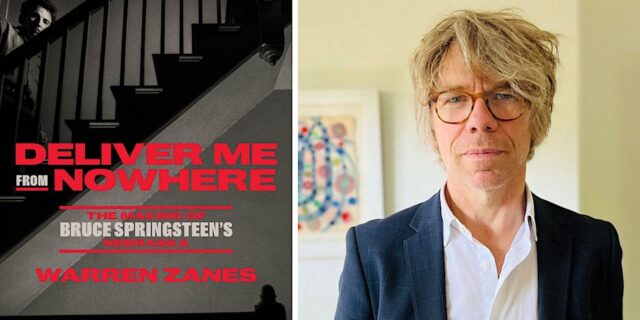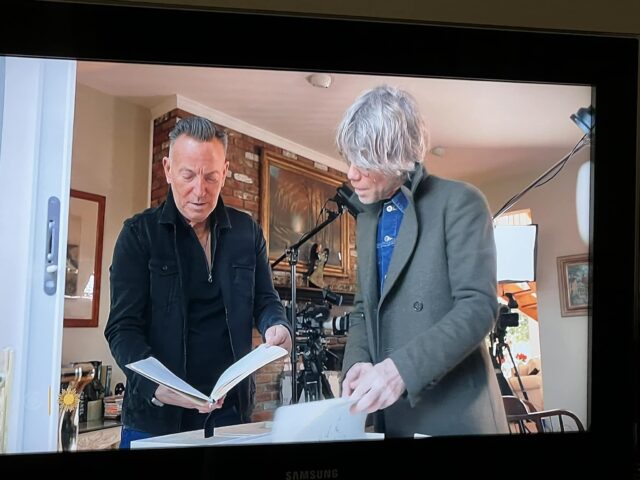
Who: Warren Zanes
What: Literary and music discussion
Where: The National Arts Club, 15 Gramercy Park South
When: Wednesday, November 8, free with RSVP, 8:00
Why: Following the international success of his international 1980–81 River tour through North America and Western Europe totaling 140 dates, New Jersey native Bruce Springsteen went into his bedroom on January 3, 1982, with a Teac four-track cassette machine and recorded fifteen songs by himself, then mixed them with an Echoplex. He carried the cassette, sans case, around with him for a few weeks, intending to teach the E Street Band the tunes that could be their next album. It was eventually decided that the songs worked best as they were, and on September 30, 1982, Nebraska was released. In ten songs over forty-one minutes — including “Atlantic City,” “Johnny 99,” “Open All Night,” and “Reason to Believe” — Springsteen took a stark look at Reagan’s America. Two years later, Bruce and the band would explode with Born in the USA — the title song was originally part of the bedroom recordings — but Nebraska has stood the test of time, filled with characters who are still searching for the American dream.
In the spring of 2021, Springsteen invited music journalist and Del Fuegos cofounder Warren Zanes to his Colts Neck home to discuss the evolution and legacy of Nebraska, in time for its fortieth anniversary; the result is Deliver Me from Nowhere: The Making of Bruce Springsteen’s Nebraska (Crown, May 2023, $28). In the first chapter, Zanes writes, “I wanted to know where Nebraska came from, what it led to. It sat between two of Springsteen’s most celebrated recordings, in its own quiet and turmoil. He described it to me as ‘an accident start to finish’ but also as the album that ‘still might be [his] best.’ The recording came from a place and a time in which Springsteen was facing troubles in his life, troubles that had no name as of yet. Wordsworth defines poetry as ‘the spontaneous overflow of powerful feelings . . . recollected in tranquillity.’ Quite differently, Nebraska came from the middle of that ‘overflow,’ was not a thing ‘recollected in tranquillity.’ It came from the heart of trouble and led to still more, its stark character the lasting reward. Nebraska was unfinished, imperfect, delivered into a world hovering at the threshold of the digital, when technology would allow recorded music to hang itself on perfect time, carry perfect pitch, but also risk losing its connection to the unfixed and unfixable. Springsteen’s manager, Jon Landau, recalled for me, over several afternoons at his Westchester home, the way in which Nebraska arrived. Chuck Plotkin, among Springsteen’s producers and a key player in the last stages of Nebraska’s creation, would talk about the anxious labor of trying to make the album conform to industry standards. But Springsteen knew the most by far, because it came from his bedroom.”

Bruce Springsteen and Warren Zanes discuss the making of Nebraska (photo courtesy Warren Zanes)
On November 8, Zanes will be at the National Arts Club to talk about the book, which features such chapters as “The Rhinoceros Club,” “The King of Pop and the Beer Can,” and “Darkness on the Edge of Bed.” The first question Zanes asks Bruce is “Are there any photographs of the room where you recorded Nebraska?” Bruce says no. Zanes writes, “I wanted to see that room because something important was made there, and I wanted to know if by looking at a photograph of the space, I could see traces of what happened, the outlines of Nebraska. And maybe those photographic traces could bring it back to life for me, a resurrection. Photographs of his previous place, the Holmdel farmhouse, are easy to find online. Whether you see Springsteen in them or not, whether the amps and guitars are in the room or not, you look at them knowing who was there once and what got done at the time, Darkness on the Edge of Town and much of The River. The rooms begin to breathe.”
[Mark Rifkin is a Brooklyn-born, Manhattan-based writer and editor; you can follow him on Substack here.]